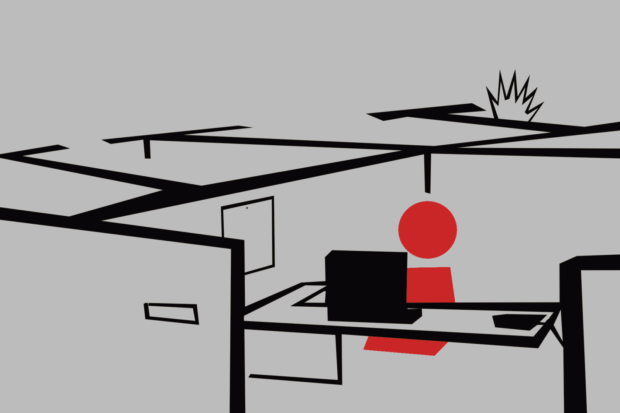
1972
South Korea. Black hair and almond eyes and parted lips; impatience intertwined with red blood. It is quiet and you are crying: a baby swaddled in fragmented memories and a mother’s tears. The air is smoky, sweet, sea-foam blue and pearly pink. An attempt to speak leads to a wail; there you are, you are here, you are everywhere. Your hands grasp for — what? God. Your hands grasp for God. Right now is all you know.
1980
Sunscreen is slathered on your yellow skin, turning it white. You think, if only I could stay like that. Bitterness is a medicine, and you know it well, have hid it between your ribs like an emotional receipt. The total cost is scratched out. You are young and watch your father take out the best bills for Sunday offering: crisp, clean, careful. The world sees you as yellow, but right now, you see green.
1988
Sweet 16. This is an American thing. It is like buttercream frosting and ripped skater jeans and red white and blue. Your hair is black, not blonde. The language of Korea flows in your blood, but there is English, too, the other half of algebra. You eat canned tomato soup with pasta shaped like letters in hopes that you will digest knowledge that looks like success. It is bland and salty at once: the taste of freedom. Kimchi tastes better.
1991
So this is college: late nights and organic chemistry and tears that stain your paper with inky spiders. Tiny tank tops and longer skirts and thin cardigans; fingertips stained with invisible acrylic from that art school you never went to. Close-cropped bangs and a pretty Honda prelude, nothing like the teenage movies. The sky is blue, and the grass is hot, and your grin is quicksilver. Is it what you expected? Do you miss the possibility of more? What are dreams but false realities?
1993
You have grown into your beauty. There is a boy sitting next to you. Green shirt and beat-up sneakers with untied laces and bar soap. A big smile — butter and sugar and team USA: just stars, no stripes. He gives you a knife to cut apples, and the skin falls into your lap in a long, unbroken spiral; the world is condensed into conversations in libraries, words trapped in a book, the strings of a guitar for worship. You watch his black sunglasses dip down the bridge of his nose and think I could love you if I let myself.
2000
You have always wanted to wear a white coat — this is what you wrote in your opening line for pharmacy school. A lie, but a convincing one. I wish you could have been a painter, that you would create portraits sitting in our home office, all blushing color and tentative brush strokes that should have held more confidence. Unknowingly, you sacrificed so that I would not have to, a healed blister, a shattered vision now swept up in the arms of time. April 1. You are marrying my father. The night is chaos and tradition and love stretched to the max. Towering vanilla cakes with edible pearls tucked inside raspberries. Tablecloths hang off of the edge like your dress brushes the floor. You are in a white gown, not a lab coat. You are radiant. Beautiful.
2003
The story shifts March 10. It is no longer the two of you — no more quiet mornings. No more two mugs on the counter and can you put the toilet seat down please and I’ll take-my eggs sunny-side up. You bring home your newborn daughter and look at her eyebrows. I stare back at you, this woman with velvet lipstick and a scar on her stomach: pink, fresh, a reminder of femininity, a miracle. You smell like the hospital and detergent and love. So much love that it spills and it spills, and I can never grasp it all. I am still trying.
2004
August is sweltering. You are ready this time, the calendar marked with a red circle on the last day of the month. Sweat lines your forehead like tiny diamonds and sparkles under fluorescent lights as you slip into unconsciousness. The sunlight pours in through the window; oak trees and sycamore and Maryland maple humidity wrapped up in a dewy present. I hold my baby brother by his small fingers: your two children, side by side, twins in everything but age. Tender skin and baby oil, unsteady limbs and unfilled scrapbooks. You want time to slow down, but it speeds up. It is cruel, in a way.
2010
Snow angels and sledding down the hill and cups of watery hot chocolate made out of the packet. There is too much snow on our lawn; you watch as we dive head-first, innocence filling our mittens instead of ice. You have said I’m sorry more times than you would like to admit; motherhood is a precarious road you are driving on without headlights, and it seems that you are breaking the speed limit. I cry when you veer off of the side of the curb. The thing is: It is OK. Did you think I could ever stop loving you less? Don’t be ridiculous.
2015
Books. Books and books and books. Overfilled shelves, trips to the library, fingertips skimming over colorful spines. Dewey Decimal System inside of my head as you watch and feed me more language until I am full of it, until I feel as if I can eat the dictionary raw. This is good. You never want me to run out of words: Even though you have two languages, phrases escape you. But not me. Good.
2018
Family vacations in Mexico, an infinity pool and sand between our toes. The sound of classical piano from the driveway. Between the years lie massive arguments and a cycle of getting hurt and then recovering. You do not know what to say. I am quiet, and you are trying to understand, but I cry inside my closet because I know it will hurt you if you hear. Motherhood is your identity — you look in the mirror and wonder how fast everything has passed: your daughter 15, your son close behind. You ask God for guidance, and He gives you patience instead. Mothers hurt, too. I am sorry it took me so long to notice. You are a well I will never reach the bottom of.
2020
A pandemic leads to 2 a.m. IHOP runs. My pancakes are sticky with syrup; you cut off a piece and swallow the food along with a golden memory. Unfinished Korean dramas with tiny subtitles at the bottom of the screen. Our throats are lined in lemon juice and honey and laughter. You look at your family and wonder what it would be like to make it last forever. Flickering street lights and empty highways and setting sunsets; red minivans with mysterious stains and ugly Thanksgiving sweater vests. I think of you every time I think of love. I think of you every time I think of — everything. I think of you.
2021
To me, you are unbreakable. You are titanium. You are — there are no words. You are. That is enough.
2022
We spend half the year apart: Berkeley and Laurel. I send letters in hopes of spreading a smile across your face. You send random pictures over text and hope I can feel how much you miss me despite the miles between us. I do. To my mother: a woman who feels too much and whose honesty can hurt. A woman who will love you until freshwater runs out. A woman who teaches me how to be brave. A woman who is tea tree oil and perfume and the wildness of the ocean. A woman who will cut persimmons and offer them to everyone before eating the bruised portion. A woman who loves me. A woman I love back, even if it will never be enough.
Now
You are my favorite everything. I love you with everything I know about love. Thank you for teaching me.
Contact Madeline Kim at madelinekim@dailycal.org.






